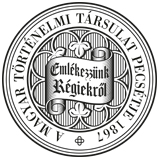Századok – 2004
Tanulmányok - Sahin-Tóth Péter: Lotaringia és a tizenöt éves háború V/1149
1188 SAHIN-TÓTH PÉTER and the geopolitical situation of contemporary Lotharingia. The present study aims to unearth the reasons laying behind this outstanding role. The country of the dukes of Lotharingia, which was composed of a handful of different territories, existed in a state of double dependency between the Empire and the kingdom of France in the 16t h century. The dukes who succeeded each other: Anthony (1508-1544), Francis (1544-1545) and Charles III (1545-1608) tried to maintain their independence by pursuing a prudent yet rather pro-French policy throughout the century. The good relationship with the French court was only temporarily broken at the end of the 1580s, when Charles III overtly turned against Henry III and then against Heniy IV After some years of hostilities the alliance was restored, however. Nevertheless, the dukes tried to maintain good relations with the Habsburgs as well. The greatest success of this policy of balance was the Treaty of Nuremberg in 1542. This treaty secured a special status for the principality within the Empire, and practically acknowledged the almost complete sovereignity of its ruler. Despite this quasi-independence the idea of belonging to the Empire and the concept of imperial solidarity remained influential. This is proved by the Lotharingian attitude towards the fight against the Ottomans. The Türkenhilfe was regularly imposed in the principality, although the sum collected did not always reach its destination.The nobility of Lotharingia (such as the Bassompierre family) and the local mercenaries took part in practically all the more important anti-Ottoman campaigns of the century. The occasion presented by the emperor Rudolph II, who from 1595 recruited soldiers in Lotharingia and the Low Countries as well, came conveniently for many a nobleman and unemployed mercenary. Already the army that Karl von Mansfeld led to Hungary in 1595 is supposed to have contained Lotharingians. Yet the first contingent evidently recruited in Lotharingia was the infantry regiment of baron Georges Bayer de Boppard together with the cavalry troops enlisted at the same time (1597). The Lotharingian troops played an important role both in the campaign of 1597 and the siege of Győr in March 1598. On the latter occasion Jean de Nettancourt, baron of Vaubecourt, who successfully exploded his petard, was the hero of the day. Boppard received a similar commission in 1598, and his soldiers continued to fight in Hungary even after the death of their commander at Buda in October 1598. Their service ended only when most of them were involved in the mutiny which broke out in the summer of 1600 at Pápa because of the lack of money and supplies. In September 1600 new Lotharingian soldiers arrived ΐο Hungary under the command of Philippe-Emmanuel de Lorraine, duke of Mercoeur and his brother, count Henri de Chaligny. Mercoeur served as vice-commander-in-chief and commander of a cavalry regiment, while Chaligny led an infantry regiment within the Christian army. Although in October 1600 Mercoeur failed to relieve the castle of Kanizsa, besieged by the Ottomans, both his commissions were prolonged for the coming year. He returned the favour by taking Székesfehérvár in September 1601. His military career was only ended by his unexpected death in February 1602. Nevertheless, his cavalry troops remained in imperial service until the end of the war under the command of another Lotharingian, Philippe-Otto zu Salm Wild- und Rheingraf. The service of Lotharingians in Hungary highlights the functioning of the .Austrian route" between Alsace and Vienna at the turn of the 16t h and 17t h centuries, that is, the way mounted troops and infantry from Lotharingia and the neighbouring territories were recruited and transferred to the front. The whole procedure, well organised by contemporary standards, was directed by commissioners, and mainly concerned the territories under direct Habsburg rule, that is Alsace and Swabia, and the cities and lands along the Danube. Alongside the mercenaries Lotharingian volunteers also fought in the Christian army. For instance, François de Bassompierre, who followed in the footsteps of his ancestors in fighting the Ottomans, or a member of the Guise family, Claude de Joinville, whose arrival to Hungary was caused by his blunders in the French court. None of them seems to have regretted their choice, for both would have keenly accepted longer service in the imperial army. The picture offered by the present study of the Lotharingians fighting in the Fifteen Years' War is necessarily a general one. Yet it is surely detailed enough to show that their role was outstanding, especially if we take it into consideration that French, Wallonians and even Italians came to imperial service through Lotharingia or Lotharingian noblemen and officers, and many of them continued to serve the Habsburgs for some time even after the Peace of Zsitvatorok.
